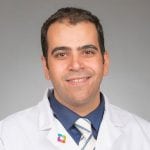<< Back
Rethinking Stroke: DAWN Trial Expands Treatment Window

November 14, 2017
A groundbreaking new study is helping hospitals and health systems around the world establish protocols that increase the time window of treatment for patients who have had an ischemic stroke, greatly reducing disability and improving outcomes.
Results from the DAWN stroke trial show that select patients suffering a major ischemic stroke (caused by a blood clot blocking blood flow to the brain) recovered significantly better with removal of the blood clot accompanied by medical therapy compared to patients who received only medical therapy initiated up to 24 hours after the stroke. The study, which was recently released in the New England Journal of Medicine and at a recent international stroke conference, was sponsored by medical technology and equipment company Stryker, which manufacturers one of the devices used for clot removal.
Traditionally, the therapeutic window for ischemic stroke was the first six hours after the event. Under past protocols, select patients were given tissue plasminogen activator (tPA) within 3 to 4.5 hours to help dissolve the clot and improve blood flow to the brain. For patients with an obvious blockage, they would have up to 6 hours to have the clot mechanically removed. Under the protocol being established as a result of the DAWN study, patients are screened using tissue-based imaging technology that pinpoints the area of damage caused by the stroke, locates salvageable area of brain tissue and can establish a timeline for when the stroke occurred. The new protocol increases the window for acute treatment to up to 24 hours.
 Dr. Amre Nouh
Dr. Amre Nouh
“This is a game-changer in the treatment of ischemic stroke patients,” says Dr. Amre Nouh, Director of the Comprehensive Stroke Center at Hartford Hospital. “According to the study, when the imaging technology was used and these select patients underwent the clot-removing procedure, there was 73 percent reduction in disability.”
Hartford Hospital, which is now using this advanced stroke protocol, anticipates that other facilities within the Hartford HealthCare Ayer Neuroscience Institute will use it in the near future.
The study is especially good news for patients who suffer a “wake up” stroke, a stroke that occurs during sleep in which the time of symptom onset can’t be firmly identified, says Nouh.
“In the past, if someone had presented beyond the six hour mark — which is nearly 40 percent of all [ischemic stroke] cases — they wouldn’t be candidates for conventional treatments like a clot retrieval procedure,” says Nouh “Now, thanks to the imaging technology and better patient selection, we can locate a timeline and determine that this is a candidate for treatment rather than categorically excluding patients.”
Nouh says four patients have been treated at Hartford Hospital since the protocol was adopted in September, most with very good outcomes.
“The DAWN study will be transformational for stroke patients because we will be able to treat people up to 24 hours after stroke on set. This greatly increases the chances that they can recover and have a full and productive life,” says Dr. Mark Alberts, Physician-in-Chief of the Hartford Health Care Ayer Neuroscience Institute. “For their families this means that their loved ones have a better chance of returning home after their stroke as opposed to being in a nursing home for the rest of their life. What this means for our patients is that we will be able to provide this new treatment throughout the state and region on a 24/7 basis and improve outcomes.”